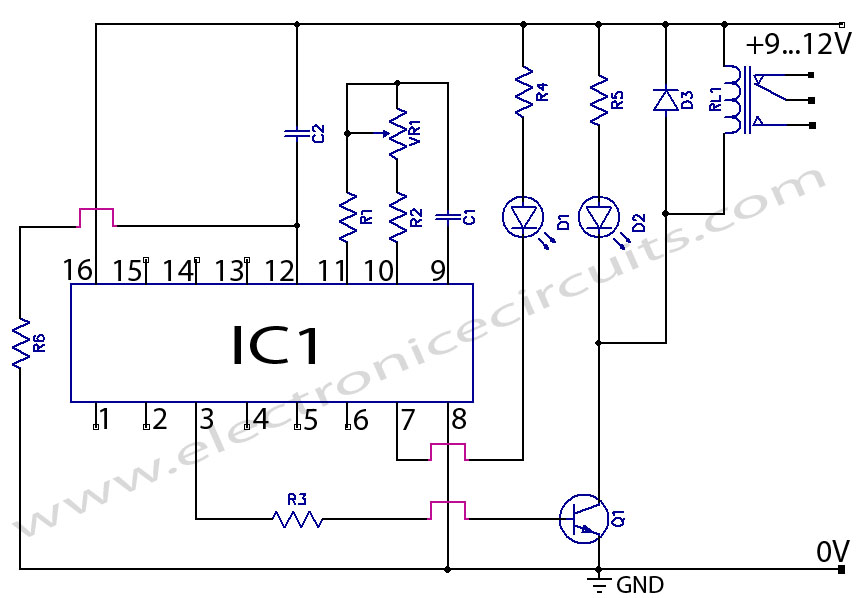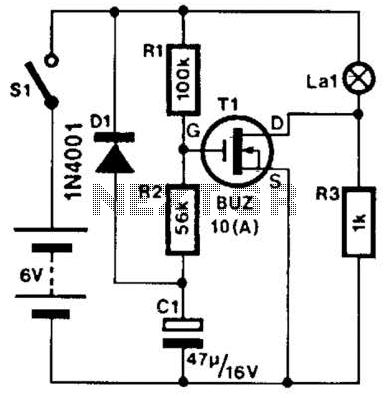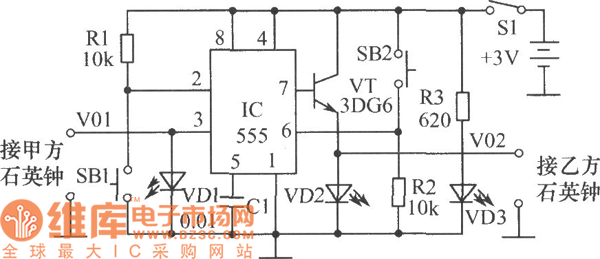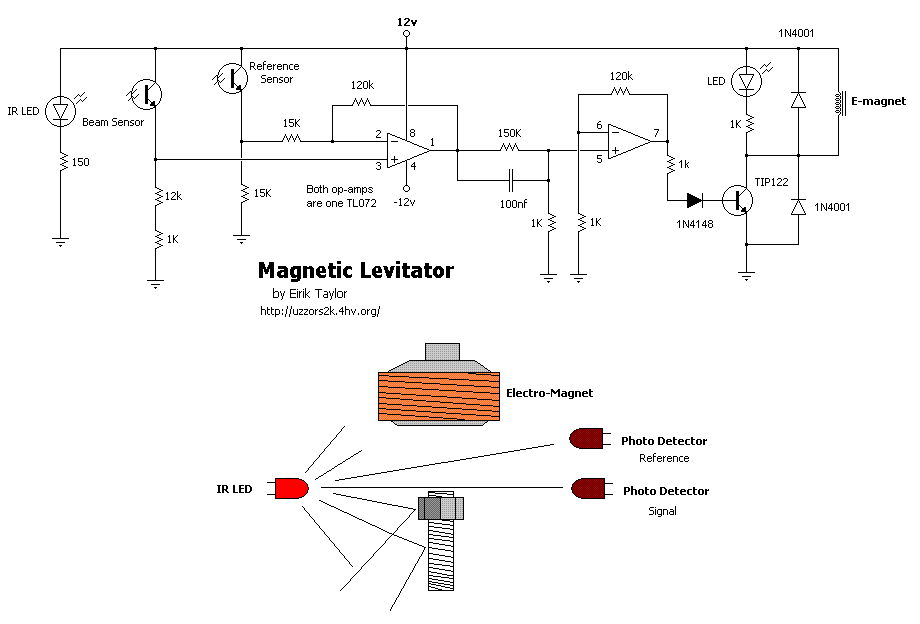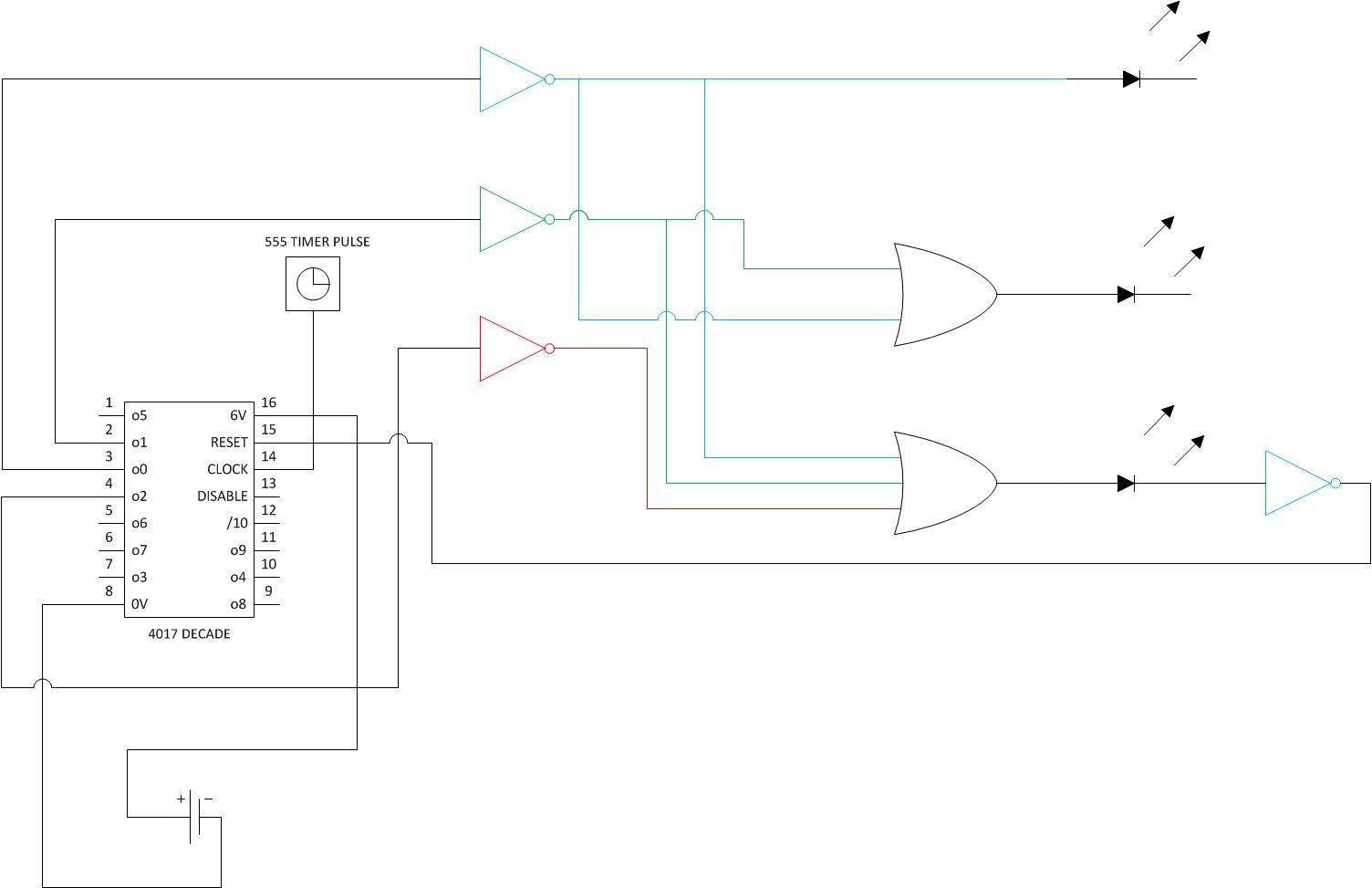
Auto Cutter mill circuit
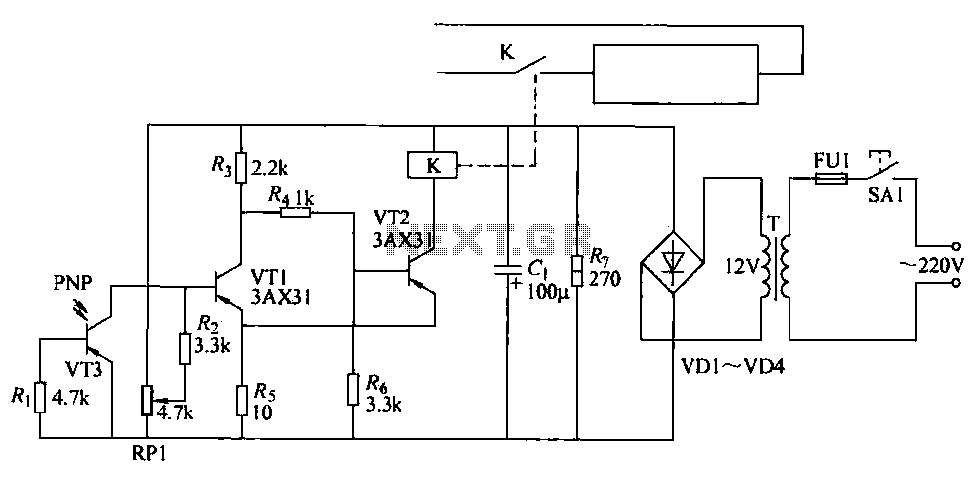
The cutter is safeguarded by a printed circuit phototransistor designed to prevent accidental activation of the cutter switch during manual feeding. In the event of manual feeding, the automatic paper cutter can be controlled to shut down. A relay with a normally open contact is used to control the power supply circuit of the cutter knife operation. The relay will only engage when the normally open contact is closed, allowing the cutter to operate. The relay coil is connected in series with the collector of a transistor, which is controlled by the states of two other transistors. The first transistor is controlled by a phototransistor, which is in turn influenced by light exposure. The cutter is positioned adjacent to a bulb, and the phototransistor is located on the opposite side to receive the light.
Working Principle: The first and second transistors form an emitter-coupled flip-flop. When a worker's hand obstructs the light from the bulb, the phototransistor shows high resistance, causing a change in voltage that turns off the second transistor. This deactivates the relay coil, opening the normally open contact and interrupting the current path to the cutter knife operation control coil. This design effectively prevents the cutter from operating when a worker's hand is in the vicinity, thereby minimizing the risk of accidents during manual paper feeding.
The circuit design incorporates a phototransistor (VT3) that detects the presence of light from a bulb. When a worker's hand covers the bulb, the light is obstructed, leading to a high-resistance state in the phototransistor. This change in resistance alters the voltage levels in the circuit, which is crucial for the operation of the flip-flop configuration formed by transistors VT1 and VT2.
Transistor VT1 is configured to respond to the signal from the phototransistor. When the light is blocked, VT1 turns off, which subsequently results in the deactivation of VT2. The relay (K) that controls the cutter operation is connected to the collector of VT2. In its normal state, with sufficient light, the relay remains energized, allowing the cutter to function. However, once the relay coil is deactivated due to the signal from the phototransistor, the normally open contact (KA1) opens, cutting off the current path to the cutter knife.
This safety mechanism is crucial in environments where manual feeding is common, as it ensures that the cutter does not operate inadvertently, thus protecting workers from potential injuries. The careful arrangement of components, including the light source, phototransistor, and relay, exemplifies effective design practices in electronic safety circuits.Cutter is protected by a printed circuit phototransistor constructed to prevent manual feeding mistakenly stepped on the cutter switch and cause accidents. The line at the time of manual feeding, automatic paper cutter can be controlled shutdown. Relay has a normally open contact K series cutter knife in operation control coil power supply circuit, only when the normally open contact K is closed, the next paper cutter before knife. K relay coil connected in series with the collector VT2 circuit, controlled by the state of VT2, VT2 and VT1 controlled by, VT1 by the phototransistors controlled VT3, VT3 controlled by light.
Cutter mounted in the side of the bulb to the other side of the exposure. lrf3 mounted on the other side with the received light bulbs to light.. Working principle: VT1 and VT2 can be composed of an emitter coupled to flip-flop. When workers hand put paper, hand it will cover light bulbs to light, so VT3 phototransistor showed high resistance, and thus will make Vn conduction, VT2 off, KA relay coil power release, its normally open contact point KA1 reset off so cutter knife operation control coil current path is cut off, to prevent release cutter workers hand cut paper when the accident occurred.
Working Principle: The first and second transistors form an emitter-coupled flip-flop. When a worker's hand obstructs the light from the bulb, the phototransistor shows high resistance, causing a change in voltage that turns off the second transistor. This deactivates the relay coil, opening the normally open contact and interrupting the current path to the cutter knife operation control coil. This design effectively prevents the cutter from operating when a worker's hand is in the vicinity, thereby minimizing the risk of accidents during manual paper feeding.
The circuit design incorporates a phototransistor (VT3) that detects the presence of light from a bulb. When a worker's hand covers the bulb, the light is obstructed, leading to a high-resistance state in the phototransistor. This change in resistance alters the voltage levels in the circuit, which is crucial for the operation of the flip-flop configuration formed by transistors VT1 and VT2.
Transistor VT1 is configured to respond to the signal from the phototransistor. When the light is blocked, VT1 turns off, which subsequently results in the deactivation of VT2. The relay (K) that controls the cutter operation is connected to the collector of VT2. In its normal state, with sufficient light, the relay remains energized, allowing the cutter to function. However, once the relay coil is deactivated due to the signal from the phototransistor, the normally open contact (KA1) opens, cutting off the current path to the cutter knife.
This safety mechanism is crucial in environments where manual feeding is common, as it ensures that the cutter does not operate inadvertently, thus protecting workers from potential injuries. The careful arrangement of components, including the light source, phototransistor, and relay, exemplifies effective design practices in electronic safety circuits.Cutter is protected by a printed circuit phototransistor constructed to prevent manual feeding mistakenly stepped on the cutter switch and cause accidents. The line at the time of manual feeding, automatic paper cutter can be controlled shutdown. Relay has a normally open contact K series cutter knife in operation control coil power supply circuit, only when the normally open contact K is closed, the next paper cutter before knife. K relay coil connected in series with the collector VT2 circuit, controlled by the state of VT2, VT2 and VT1 controlled by, VT1 by the phototransistors controlled VT3, VT3 controlled by light.
Cutter mounted in the side of the bulb to the other side of the exposure. lrf3 mounted on the other side with the received light bulbs to light.. Working principle: VT1 and VT2 can be composed of an emitter coupled to flip-flop. When workers hand put paper, hand it will cover light bulbs to light, so VT3 phototransistor showed high resistance, and thus will make Vn conduction, VT2 off, KA relay coil power release, its normally open contact point KA1 reset off so cutter knife operation control coil current path is cut off, to prevent release cutter workers hand cut paper when the accident occurred.
